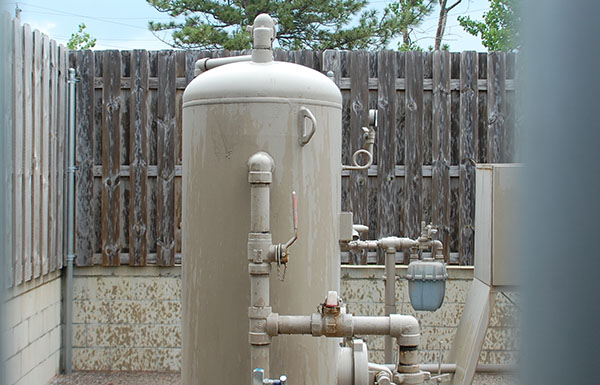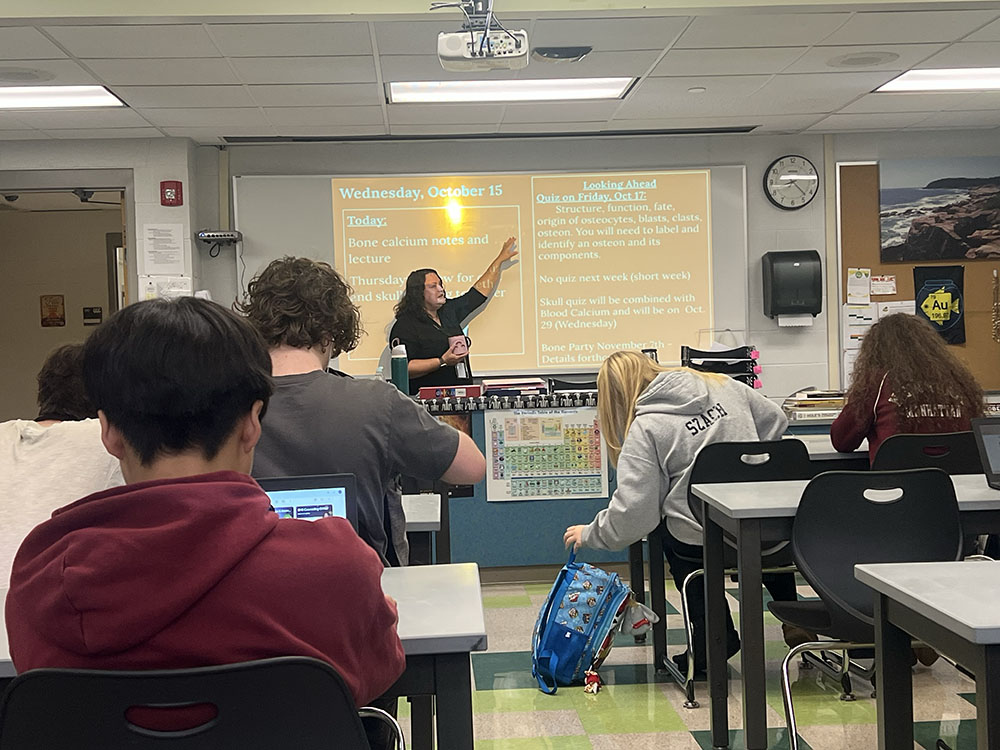In recent years, there has been a significant natural gas and oil boom in Ohio. Beachwood is part of that boom, as it sits on top of shale that holds a lot of energy.
In 2009, the Beachwood City School District installed a natural gas well on the district’s transportation garage property on Commerce Park.
Beachwood was approached by Duck Creek Energy, Inc. to use the land on the bus garage property to drill a natural gas well.
“Three property owners had signed on to have their properties part of a lease with Duck Creek for natural gas exploration and drilling… They needed our piece as the last to make up that 20-acre plot because we have about four acres there with the bus garage,” said Beachwood Superintendent Dr. Richard Markwardt.
The Well
The well is vertically drilled 3,500 feet deep and produces both natural gas and crude oil, which is pumped from the ground and separated at the surface with special machinery.
“The natural gas goes through a piece of equipment called a separator,” said Duck Creek Energy, Inc. President David I. Mansbery. “The gas goes out the top and a separate line has been laid over to the bus garage.”
The gas also goes to the Dominion East line to fuel homes.
The crude oil stays at the bottom of the separator and is collected in a storage bin. Then, it is barged down the Mississippi River and processed to make products such as Aspirin, make-up and the shells of M&Ms.
Some may be concerned about the environmental consequences of drilling for gas and oil on school property. New York State, for example, recently extended a moratorium on high volume hydraulic fracturing to allow further review of environmental and health impacts, according to Reuters.com.
Mansbery explained that the Beachwood bus well is a low volume well. He also explained that the well, like the majority of oil and gas wells, does use hydraulic fracturing methods.
“The anti oil and gas crowd may call the Beachwood bus well a ‘fracking well’… but ‘fracking’ is a procedure that connects the pores of the rock containing oil and gas and allows it to come to the well bore,” Mansbery wrote in an email.
“A well is drilled first and then pipe is cemented in the well with concrete. There are at least… three strings of pipe placed and cemented in the hole to protect the fresh water zones located above the zone to be fracked. Fresh water does not exist in Ohio below 1,500 to 2,000 feet,” Mansbery wrote.
Drilling and hydraulic fracturing are two different steps in the gas extraction process.
“The drilling and fracking crews and equipment are different and never even have contact with each other,” Mansbery said.
Mansbery emphasized the importance of developing domestic energy sources instead of continuing to rely on foreign energy sources.
Drilling the Well
Duck Creek drills through several layers of earth before reaching the natural gas and oil. They go through a series of different sandstones and shale. They also drill through different levels such as salt and limestone. When they hit the Queenston shale, that’s the desired depth of the well.
“We drill through until the drill cuttings turn blood red… we know we have encountered the Queenston shale and … we know we’re done. We’ve reached the total depth of the well,” Mansbery said
Environmental Concerns
The company met with the Ohio Department of Natural Resources (ODNR), which instructs them on how to construct the drilling pits.
“Usually, geologists have to determine whether groundwater supplies are going to be at risk..There is potential for drilling into a formation that they don’t want to drill into,” said science teacher Joe Burwell.
While an environmental impact study was not required for this well because of its small size, Mansbery explained the ODNR requires environmental planning.
“The ODNR does require our permit application form [to include] a restoration plan which requires us to restore the property after drilling the well back to near original condition,” Mansbery wrote.
“The state requires a pre-site meeting and the state inspector prescribes how the drilling is to be [handled] and any special requirements that the state will impose at that time,” said Mansbery.
But there are environmental concerns that should be addressed.
“The effects are usually only felt if things don’t go the way they are supposed to go. You can have ground water contamination and release of natural gas into the air can cause air pollution,” Burwell said.
However, Mansbery assured that the ‘fracking’ process is safe.
“The ‘frac water’ chemical for 99.5% [of the process] is H2O… the water you drink,” Mansbery wrote. “We add soap to lower the friction caused by pumping the water down the hole and a chemical called citric acid and sodium erythorbate — both scary sounding food preservatives that remove oxygen from the water. The water returns back to the surface when the procedure is completed and disposed of in a state licensed Class 2 injection well.”
Prior to drilling the well, the Beachwood Board of Education hosted an informational meeting, open to the public, for residents who live near the well. No residents attended the meeting.
Revenue
Beachwood has a small amount of land, so as a result, the City only receives a small financial percentage. Beachwood receives 3.7% of the revenue generated by the natural gas well. The well has generated anywhere between $10 and $500 per month for the school district.
The district received a $20,000 payment to begin drilling operations.
In addition, the transportation building gets 400,000 cubic feet of free gas out of this deal and a $5,000 signing bonus. This is used to heat the bus garage.
According to Markwardt, the reason the district has not put wells at school sites is out of a desire to ensure the safety of students.
“I don’t want to put in anything that I think could have a negative impact on our kids’ health, ” said Markwardt.
The school district has been approached by other gas and oil companies, along with cell phone companies to put in towers.
The Board of Education does not plan to allow the drilling of any more wells, as the transportation garage well has not produced as much revenue as expected.
There are no current plans to develop other energy sources on Beachwood property.






![“My parents have always said that education is important. My parents are Chinese immigrants, I'm Chinese American, [and that's a] value that has always been ingrained in our community,” said Senior Lyndia Zheng, pictured with Tony Zheng](https://bcomber.org/wp-content/uploads/2025/10/DSC_4244.jpg)








